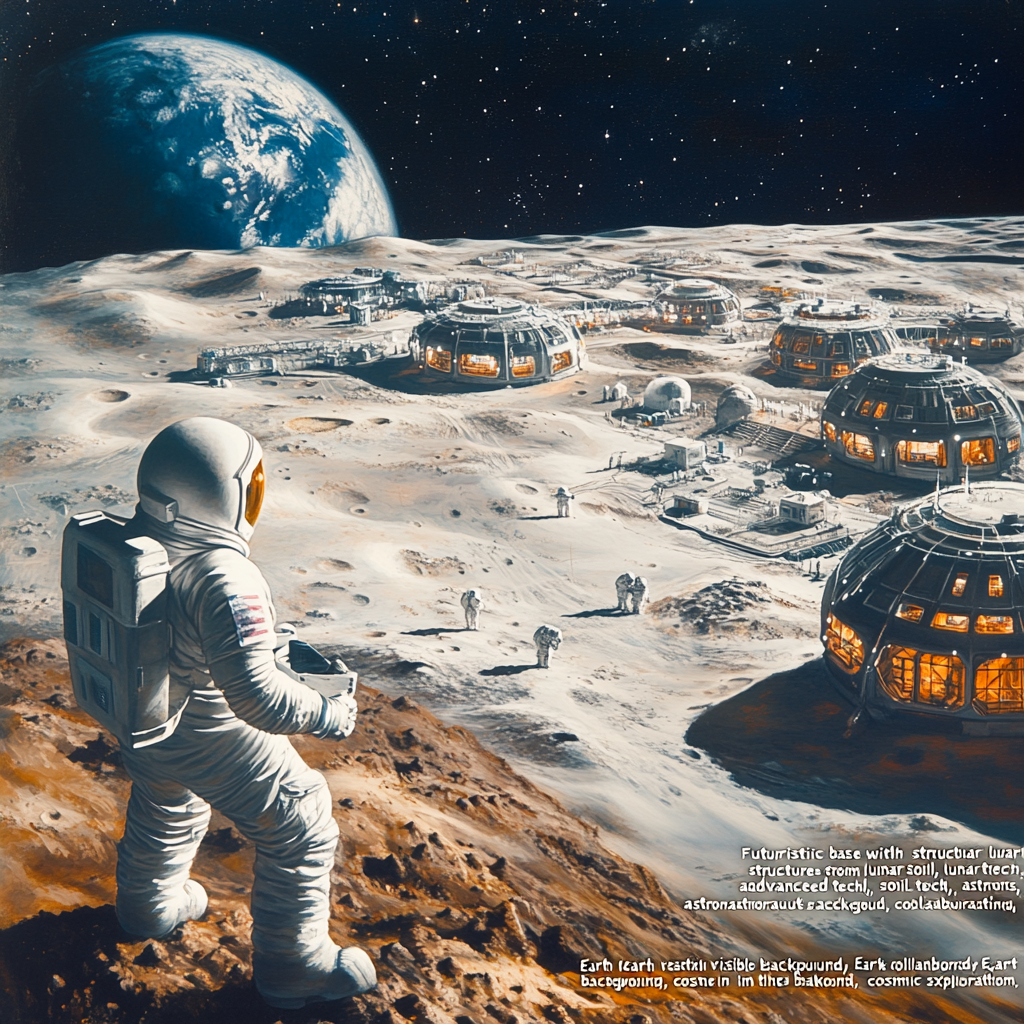
Lunar Construction: China’s Vision for Moon Brickmaking
Building Blocks: The Bold Hopes of Lunar Construction by China
Let’s take a stellar leap into the cosmos—specifically, to that pockmarked and dusty celestial neighbor, the Moon! China has its eyes on this glowing orb and not just to leave a flag behind. They’re dreaming much bigger; they aim to turn the Moon into a construction site! The plan? To use lunar soil to create the very bricks that will shape the habitats for future lunar explorers.
First off, building anything on the Moon is a Herculean task. Imagine the Moon as a deserted, arid wasteland where temperatures fluctuate like an out-of-control roller coaster—180°C (356°F) under the blazing sun, and then BOOM, -190°C (-310°F) when night takes over. Yep, that’s not just chilly; that’s sledgehammer-to-the-face cold. On top of that cosmic drama, the lunar surface is under constant bombardment from cosmic radiation, micrometeorites, and the occasional moonquake that rumbles through the crust. So, durability isn’t just a buzzword here; it’s a lifeline for any potential structures.
To tackle these Herculean challenges, Chinese scientists have turned their attention to a concept that sounds like it was ripped from the pages of science fiction: in-situ resource utilization (that's a fancy way of saying, "Let’s just use what’s here!"). This means snatching up that lunar regolith—the glittery moon dust—and turning it into bricks right there on the lunar surface. Genius, right? Not only does this nifty approach cut down the astronomical costs of transporting materials from Earth, but it also adds a pinch of practicality to this cosmic venture.
Now, where are the scientists in all of this madness? They’re busy moon-gazing, quite literally. The latest steps in this jaw-dropping project involve launching samples made from lunar soil imitators to the Tiangong space station, because why not set up a celestial workshop? Dubbed the Tianzhou 8 cargo mission, these moon bricks will undergo years of rigorous exposure tests to see how they hold up against cosmic rays, ultraviolet light, and the delightfully unforgiving temperature swings of outer space. Talk about a tough job! But these scientists aren't deterred—they're like astronauts mixed with real estate developers, pushing boundaries where no one has dared to before.
Now, let’s sprinkle some tech magic into this lunar brick-making process. Scientists have devised some rather nifty methods to create these blocks, one of which involves cranking the heat up to over 1,830°F (1,000°C) using electromagnetic induction. Sounds like something out of a sci-fi movie, doesn't it? Within about ten minutes, you can have a solid lunar brick, thanks to heating lunar soil simulants. The composition? Various materials, including basalt, which mimic the moon's actual properties. These bad boys boast three times the tensile strength of regular bricks and can interlock like the best Lego sets ever made. No adhesive needed; just plain good old-fashioned engineering.
But wait! The lunar dreams don't stop here. China has grand aspirations that stretch far into the decade. They’re not just whistling in the dark. The goal is to send humans back to the Moon by 2030, staking their claim to a permanent lunar base by 2035. What’s a key player in this endeavor? The International Lunar Research Station (ILRS)—a cool name for a joint project with Russia and a coalition of over a dozen countries. It’s like the United Nations for lunar construction, only a lot more exciting. They've got their eyes set on the next big milestone: the Chang'e 8 mission, scheduled for 2028, which will be a dazzling test of 3D-printing techniques aimed at utilizing that precious lunar regolith to craft their bricks.
But here’s the plot twist—this ambitious project isn’t a solitary venture. It’s a tapestry woven with intellect and expertise from around the globe. Scientists from various spheres of knowledge are rallying together like the Avengers of space engineering. As the project lead Ding Lieyun of the Chinese Academy of Engineering stated, "Scientists from all over the world are tackling this challenge together." The power of collaboration turns a daunting task into a remarkable adventure—if only world governments could learn from this cosmic teamwork and settle their terrestrial disputes over conference tables.
In conclusion, China's audacious initiative to forge bricks on the Moon using lunar soil isn’t just a lofty ambition; it’s a groundbreaking step towards establishing a human presence beyond our blue planet. Armed with rigorous testing and innovative manufacturing methods, this project is paving a solid path toward future lunar habitats. So, as we gaze up at that silvery crescent in the night sky, let’s remember that the future of space exploration holds limitless potential—shaped by cooperation, ingenuity, and perhaps a pinch of cosmic luck.
Want to stay up to date with the latest news on lunar construction and space exploration? Subscribe to our Telegram channel: @channel_neirotoken. Your tickets to the stars are just a click away!

